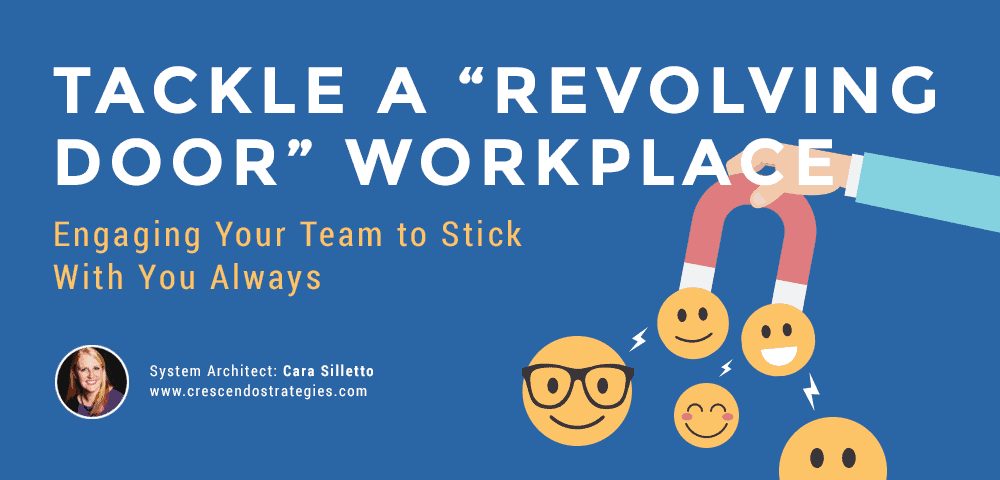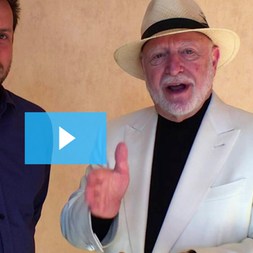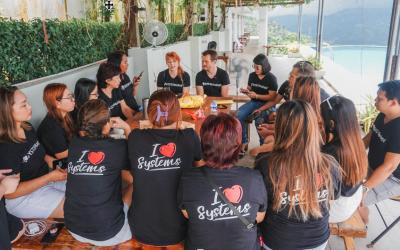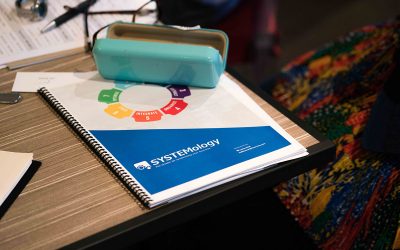
System Architect | Cara Silletto
No two workplaces are the same. Let’s make that clear from the start. We’re all running teams filled with a variety of demographics and backgrounds. Sometimes, it can be difficult to get everyone reading from the same page. At absolute worst, this can lead to a drop-off in employee retention.
A brand’s worst nightmare is losing its team – its core components! Without people on board to help run the ship, it’s going to sink. There have been recent trends showing that short term, ‘revolving door’ workplace systems are ushering employees in and letting them back out again with carefree abandon. This isn’t such a worthwhile strategy long term – in fact, it’s going to be more prudent to start thinking about how to retain your workforce more carefully.
Understanding Your Workplace
For a workplace to continue growing with a stock team of talented, engaged people, respect and understanding are going to need to run both ways. It is being suggested that short term work is a very millennial concept – but why is this? What can be done to engage and to inspire our younger talent? It’ll take modern thinking, modern tools, and an open mind.
If your business is hungry to capitalise on modern trends to influence and inspire your workforce to continue with you on your journey, you’re going to need a system to help you get everything in place. Take a look at ten tips we strongly advise you start putting into practice to shut down that revolving door system for good.
10 Tips to Reduce Unnecessary Millennial Employee Turnover
We have evolved over time for our external customers based on what they need and what their expectations are. Now it’s time to look at how our workforce has evolved and what we can do about it.
Step 1: Understand your team and staff.
- There are two types of personnel:
- Trees are people who are deep-rooted within a company or organisation. They typically stay put and tend to be loyal.
- Revolving Doors are people who don’t stay very long. Job-hoppers who tend to want to grow, and experience new things.
- What is the percentage of each of these personnel types in your company?
- Is it 50-50? Is it 70-30?
- Project that percentage over a period of 5-10 years.
- In most industries projections are showing more Revolving Door employees, meaning we need to plan for a shorter term workforce.
Step 2: Gather data, don’t make assumptions.
- Don’t make decisions based on your hunches and assumptions of what people want (some of your staff may not think like you, or were not raised like you).
- Do “stay interviews” – what can you do both as an organisation, and as a leader to help your staff do their job better.
- Conduct these interviews with new employees 30, 60 and 90 days into their job to check on their feelings about the company, the management style and operations.
- Suggestion! Conduct them at an alternate time of your standard performance evaluations.
- You can then conduct these interviews with employees every six months or at the 6-month and 18-month mark.
- Don’t attach the stay interview with the standard performance review. This is not about how the employees are doing, but how the company is doing.
- If you have enough staff, conduct official surveys to collect feedback.
- Grab the chance of asking a team member or employee one-on-one, “What do you think about this?” , “How would you improve that?”
Step 3: Welcome people to the organisation.
- What does onboarding and orientation look like?
- Build welcoming onboarding and orientation systems to win people over. Make sure they feel like they are part of your company family and that you are excited to have them onboard.
- You can create welcome baskets, and welcome notes to clients/customers or other team members to introduce the new team member.
- What would the new team member think? Is their day 1 boring? Do they still want to come in for day 2? Does it feel stressful or lonely?
- Come up with fun ways to make the first few days extra exciting and engaging for the new team hires.
- Plan the ideal training timeline or schedule.
- Space out the training. Based on adult learning, people can’t retain too much information at that one time.
- When information is crammed together, the less the new hire will retain the information.
- It’s costly to train people, especially if they don’t stick around.
- You have to know what your new employee needs to know in week 1, month 1, year 1.
- Space out the training. Based on adult learning, people can’t retain too much information at that one time.
Step 4. Train your managers and supervisors on today’s new workforce.
- Make sure that you, as a manager and leader, and your managers and supervisors are trained to better communication and better management techniques.
- How to talk with people.
- Conflict resolution.
- How to give and receive feedback.
- Conduct performance reviews accurately and effectively.
- Better management technique.
- There is a bigger expectation on managers and supervisors today.
- They are expected to be more like coaches and mentors. Helping employees advance in their careers without too much criticism but more of that coaching mentality.
Step 5: Enhance your corporate communication.
- Have consistent corporate communication.
- Have a steady drumbeat of what you want people to do, and how you want them to behave.
- Don’t simply cover your core values, vision, and how you want employees to behave, on day 1. Instill this in employees over time and give them reminders of what is expected of them.
Step 6: Game-ification
- Build ways for people to “level up” and to advance their career (even if it’s in the same job).
- Even though there could be no other title you can promote someone to or have the money to give them a raise, you can find different ways to level them up in their job.
- Provide them more education or training.
- Could they have a mentor, or be one?
- Could they go back to school or get another certification?
- They could they part in in-house training or even webinars, summits, and online training.
- Build their network and introductions to certain types of people.
- Offer more opportunities for professional development and career path advancement.
- Build competency levels – create tasks/skills that someone in a role can learn over time.
- Even though there could be no other title you can promote someone to or have the money to give them a raise, you can find different ways to level them up in their job.
Eliminate the thought of “being stuck” in one job and the thought of “no better opportunities” in an employee’s mind. Build the opportunities and competency levels in the company (even if it’s just that one job description).
Step 7: Succession planning
- Be more effective in your operations.
- Create training manuals, checklists and documentation.
- Have a maintenance schedule put in place to update these regularly.
- Have these resources available to new staff.
- This will lessen key man dependability.
- In the long run, even if it costs a lot of time and effort up front, this will help you save money and time by creating training manuals, and checklists for certain
- Suggestion! To keep consistency, create an all-company checklist for everyone in Day 1-2, then break it into Department checklists (Day 3-4), then the next week make it a role-specific.
Step 8: Scheduling
- Give as much flexibility as possible.
- Example: Offer different options as 4, 6, 8, 10 and 12 hours shifts.
- The more hour options available, the more attractive your company becomes. This attracts talents you want, and It often keeps them there because they don’t find these flexible hours elsewhere.
- Suggestion! Use a scheduling software or app.
- These software and apps help employees switch shifts with each other and communicate what their preferred schedule would be.
Step 9: Flexible compensation
- Think about what you’re offering to people as far as the entire compensation package.
- Ask your employees what type of benefits matter to them and adjust their compensation package to match their needs.
Step 10: Build loyalty in your people.
- CASE for a new leadership model:
- C: Communicate your expectations.
- Make your expectations clear.
- A: Appreciate any job well done.
- Appreciate people who do their job (not everyone who comes in actually does their job).
- This builds the relationship with your staff.
- S: Spend more time with your people.
- Go out and get feedback (you can do the survey).
- It’s time to learn how your company is doing.
- E: Evaluate your effectiveness regularly.
- The workforce is changing.
- Create the place people want to be in or work in. Be the manager people want to work for.
- Be up to date. Know what the modern-day workforce is up to and what they want and need.
- C: Communicate your expectations.
Communicate to Inspire – Not Just to Enforce
Inspiring a relatively young workforce to continue to build and be your brand isn’t always going to be as simple as it may seem on paper. With this in mind, it is worth considering taking a measured approach to understanding, communicating with and appreciating your workforce and teams.
As mentioned earlier, retaining a workforce largely revolves around this concept of two-way respect. From your side of things, this means you are likely going to need to look at the way your team and brand operates with a fresh pair of eyes.
Communication should be key in everything you do in each and every respect. When it comes to appealing to a workforce who may be at risk of leaving within the short term, you’re going to need to look at modern ways to approach such talent. You’re also going to need to use a system which neither patronises nor misses the mark completely. It’s a balance which is well worth finding in the long run, particularly as retaining the right people could make all the difference.
We’d love to hear from you if you’ve already put strategies into place with regard to influencing ‘revolving door’ team members. What’s your system for encouraging and inspiring others? Share your stories with us and brand owners, and we can all start to look at the bigger picture together. System-building is just as much about collaboration as it is about gaining greater clarity on the things that matter!
System Architect – Cara Silletto

In 2016 alone, Cara Silletto conducted more than 100 engagements for clients such as Humana, Vistage, Cintas, Berkshire Hathaway, AHCA and more. Cara and her message have impacted over 10,000 business leaders around the country. Workforce Magazine named her a “Game Changer” and Recruiter.com said she’s a “Top 10 Company Culture Expert to Watch.”




















